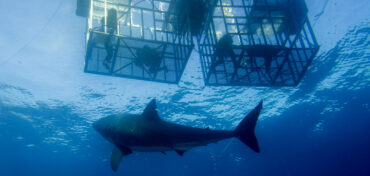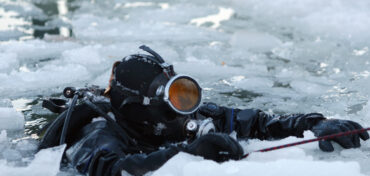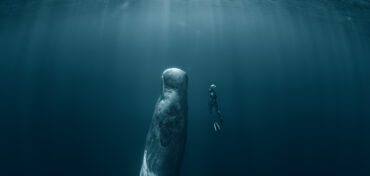
Have you ever dared to cage dive with the Great White off the coast of South Africa or even in the Bahamas with the Caribbean Reef Shark? Most divers have never been on a cage dive with sharks, but the few who have looked death in the face. Sometimes the sharks are a little aggressive. Sometimes they seek blood. Do they seek to attack cage divers? There has never been a death by cage diving with sharks ever recorded, but this doesn’t mean sharks have never attacked cage divers. A conflict arose when a great white plowed into a cage with Mark Currie during a cage dive off the coast of South Africa in 2005. The boating company tried to launch a lawsuit against the British tourist when they said he damaged their equipment. In addition, they held a lawsuit against local media outlets for exaggerating the news story. You would think that Mark would have sued the company, but he described the incident as the most exciting experience of his life. Was Mark merely trying to receive fifteen minutes of fame, or was his near-death experience so exhilarating he had to share it with the world? We may never know. We do know that sharks have attacked cages before, and sharks have attacked divers in the open ocean. Those two facts together are enough to place any cage diver on edge.
Precautions to Take when Cage Diving
Most of us would not be thrilled if a shark plowed into our cage. So how do you survive or prevent a shark attack? Some cage diving companies consider safety, while others use chum to lure sharks in. There have even been ethical debates concerning cage diving. Read these precautions to take when cage diving and decide for yourself.
- Chart a cage diving company that does not use chum to lure sharks towards the boat. The best cage diving tour guides know where the sharks are. Using chum to draw the sharks in takes away their fear of humans.
- If the conditions are murky in the water, it’s best to steer clear of these areas. Avoid areas with chum in the water. (See above.)
- There is strength in numbers. Take a dive buddy with you.
- Ensure your lines and tubes are correctly tied and gathered to avoid a shark taking hold of you.
- Keep one hand on the cage as you climb down inside. This practice ensures you can quickly pull yourself inside if a shark approaches.
- Use the controlled seated technique to get inside the cage. Your cage dive team should demonstrate it. You use both hands to pull yourself down into a seated position.
- If you want to take photos, climb into the cage first. Then have someone hand you your camera. Otherwise, you cannot hold onto the cage bars as you descend.
- Avoid a collision with your dive buddy.
- Never extend cameras or limbs outside the cage, which the shark considers bait.*
- Remain calm at all times. Movement can disturb the shark.
- Take a diving knife in case you become stuck or trapped by your equipment.
These tips are helpful to prevent a shark from noticing you, but what if they can’t resist plowing into your cage. If you find yourself close to the abyss of a shark’s jaws, you can still escape if you act fast and follow the tips below.
- Keep your eyes on the sharks at all times. They are less likely to approach if they know you are watching them.
- If a shark pushes into a cage, sinking below or above them is your best chance of survival. Sharks cannot swim backward, which means they will be thrashing around with you inside the cage.
- Most cages have an exit hatch in case of a shark attack. Ask the charter to show you how to operate the escape hatch before diving.
- Once you exit the cage, be mindful of other sharks lurking nearby.
- If you need to exit the cage from deep levels, open the cage and exit quickly with your dive buddy. Inflate your BCD and swim to the top with your dive body.
While there is no guarantee that you will survive a shark attack, your chances of survival are greater if you follow the tips above. The best way to prevent death by cage diving is to speak with your SCUBA instructor; they may be able to offer you a course in cage diving. If you have any questions about cage diving, contact By The Shore SCUBA Instruction.
*This statement above is based on accuracy but is inserted for dramatization.
By the Shore SCUBA Instruction is not certified to offer advice concerning marine animal behavior. The advice above is not guaranteed to stop injury or death from occurring. We write this article based on the experience of individuals, divers, cage dive charters, and others who work directly with sharks. You attempt cage diving at your own risk to life and limb.
Sources-
Shark Cage Diving Safety Tips – Shark Bookings
Extreme Great White Shark Cage Attack | World’s Scariest Animal Attacks – YouTube
Tourist who escaped shark attack faces legal action | The Independent | The Independent
Shark experts set to sue media | News24
Is it Ethical to Dive and Swim with Sharks? (worldnomads.com)
Equipment For Scuba Diving: An Illustrated Guide For Beginners (diverbliss.com)
The Best Way to Escape a Shark When You’re ’47 Meters Down’ (inverse.com)






